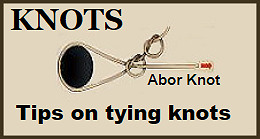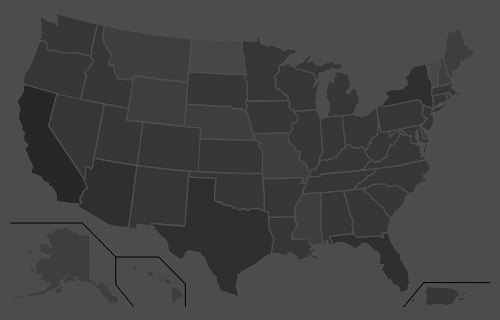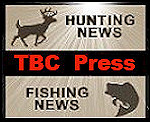“Our added winter moisture and active calling period led to a very long nesting and hatching season, starting in late April and extending into early summer, with chicks hatching as late as early July,” O’Dell said. “From a population standpoint, we are out of a deficit for the first time since 2001-2002. Quail are starting to pop up in places they haven’t been seen in a while.
“If you’ve never had the chance to experience what Arizona quail hunting built its name on, then this would be the year to get out and enjoy it.”
Meanwhile, hunters should note that the season for Mearns’ quail doesn’t begin until Dec. 4. It’s summer rainfall that plays a key role in nesting success and population numbers of this species. After a spotty and relatively weak monsoon across southern Arizona, these birds are likely to be abundant only in pockets that received sufficient precipitation this summer.
A valid Arizona hunting or combination hunt and fish license is required for all hunters 10 and older. Those hunters under 10 must either have a valid hunting or combination hunt and fish license, or be accompanied by an adult who possesses a valid hunting or combination hunt and fish license. Licenses can be purchased online or at license dealers statewide. A youth combination hunt and fish license (ages 10 to 17) is $5.
The general bag limit is 15 quail per day in the aggregate, of which no more than eight may be Mearns’ quail (when the Mearns’ season opens Dec. 4). The general possession limit is 45 quail in the aggregate after opening day, of which no more than 15 Gambel’s, scaled or California quail in the aggregate may be taken in any one day. After the opening of the Mearns’ season, the 45-quail possession limit may include 24 Mearns’ quail, of which no more than eight may be taken in any one day.
More quail-hunting information can be found on the department’s website at https://www.azgfd.com/Hunting/. Another resource for both new and experienced hunters alike is “An Introduction to Hunting Arizona’s Small Game.” Written by Randall D. Babb, the 196-page, full-color book covers where and how to hunt small game birds (like quail), squirrels, rabbits, ducks and geese. It also includes how to prepare and cook your harvest, with illustrations and recipes. The book can be ordered for $16.95 at www.azgfd.gov/publications.
Finally, hunters should check out O’Dell’s techniques for field-dressing quail at https://www.youtube.com/watch?v=3gRwZAcWzzk.
####
Publishers Notes: OUT OF STATE HUNTERS, FISHERMEN & OUTDOOR ENTHUSIASTS; Due to the Covid 19 pandemic, there could be limitations for OUT of STATE hunters, fishermen and other outdoor enthusiasts to include a 14-day quarantine requirement or negative COVID-19 testing alternative. Please check with the State's Department of Natural Resources BEFORE you travel or apply for the 2020 Fall Hunts.
Disclaimer: The views expressed on this site are that of the authors and not necessarily that of TBC Press
States set 2022 Columbia River Summer/Fall Salmon & Steelhead Seasons
Submitted by: TBC Press
Posted on: 05/19/22
The Backcountry Press
The country's premier daily HUNTING, FISHING & OUTDOOR news in the USA and around the globe. Read whats happening in your neck of the woods & beyond.
© 2020 TBC Press - All Rights Reserved Website Design by:
News # 14772
This year's adult fall Chinook forecast of 485,500 fish is similar to the actual return in 2021. Chinook retention seasons start Aug. 1 and vary by river section and include additional protection measures for ESA-listed LCR fall Chinook, including mark-selective (adipose fin-clipped only) rules for Chinook at Buoy 10 through Aug. 24 and closures of salmonid angling upstream of west Puget Island when Chinook retention is prohibited.
Due to the low forecast for upriver summer steelhead, protective regulations will include a one hatchery steelhead daily bag limit when open, area-specific retention closures, and Thermal Angling Sanctuaries encompassing portions of Eagle Creek, Herman Creek, the Deschutes River, and the Columbia River near the mouths of these tributaries. Tributary fisheries in the Deschutes and John Day rivers are also restricted until additional information about the strength of the wild upriver summer steelhead run becomes available.
For more information about upcoming Columbia River seasons, including regulation updates, visit ODFW's online fishing reports at https://myodfw.com/recreation-report/fishing-report/columbia-zone
The following are detailed regulations for the 2022 Columbia River summer and fall salmon and steelhead seasons. Remember all regulations are subject to change; anglers should check their zone in the Recreation Report before fishing to make sure seasons haven't changed https://myodfw.com/recreation-report/fishing-report/
2022 mainstem Columbia River summer/fall salmon and steelhead regulations*
Summer Season (June 16 – July 31)
Astoria-Megler Bridge upstream to Bonneville Dam
- Retention of sockeye is prohibited.
- Retention of adult hatchery Chinook allowed June 16–22.
- Retention of hatchery steelhead is allowed.
- The daily adult bag limit is two salmonids during June 16–22, but only one may be a hatchery steelhead. The daily adult bag limit is one hatchery steelhead during June 23 – July 31.
- Retention of hatchery jack Chinook allowed.
Bonneville Dam upstream to Hwy 395 Bridge (Pasco, WA)
- Retention of sockeye is prohibited.
- Retention of hatchery Chinook (adults and jacks a) and hatchery steelhead allowed.
- The daily adult bag limit is two salmonids, but only one may be a hatchery steelhead.
Fall Season (August 1 – December 31)
For all fall-season salmonid fisheries, each legal angler aboard a vessel may continue to deploy angling gear until the daily adult salmonid bag limit for all anglers aboard has been achieved.
Buoy 10 upstream to west Puget Island
- Area definition: From the Buoy 10 line upstream to a line at the west end of Puget Island extending from green navigation marker #39 on the Washington shore to green navigation marker #41, then to red navigation marker #42, and terminating at red navigation marker #44A on the Oregon shore.
General regulations during August 1 – December 31: 1) adult Chinook are longer than 24-inches; 2) adult coho are 16-inches and longer if caught downstream of the Tongue Point – Rocky Point line (defined as: a line projected from Rocky Point on the Washington shore through red navigation buoy #44 to the navigation marker at Tongue Point on the Oregon shore), and adult coho are longer than 20-inches if caught upstream of the Tongue Point – Rocky Point line; 3) wild coho must be released; 4) all steelhead must be released August 1 – October 31; and 5) retention of jack salmon prohibited through September 30 downstream of the Tongue Point – Rocky Point line, but is allowed a beginning August 1 upstream of the Tongue Point – Rocky Point line.
For more information and map see; https://www.dfw.state.or.us/news/2022/05_May/050922.asp
####
Oregon and Washington fishery managers recently finalized seasons and regulations for 2022 Columbia River summer and fall recreational salmon and steelhead fisheries.
Forecasts for summer Chinook, fall Chinook, and coho will allow opportunity for anglers to target these fish but with added protections for ESA-listed LCR fall Chinook. The forecast for upriver summer steelhead of 99,700 is below average and will require conservative retention regulations again this year. In addition, while the sockeye forecast of 199,700 is large enough to allow a retention fishery, this forecast includes only 19,200 Wenatchee River sockeye which is below the escapement goal; therefore there will be no directed sockeye fishery in the Columbia River downstream of the Wenatchee River confluence.
For the summer season, retention of adult hatchery Chinook will open June 16 and is expected to continue through June 22 downstream of Bonneville Dam and through July 31 from Bonneville Dam upstream to the Oregon/Washington border. Hatchery steelhead retention will be allowed June 16 to July 31 from the Astoria-Megler Bridge upstream to The Dalles Dam and June 16-August 31 from the Dalles Dam upstream to the OR/WA border with a reduced bag limit of one fish.












